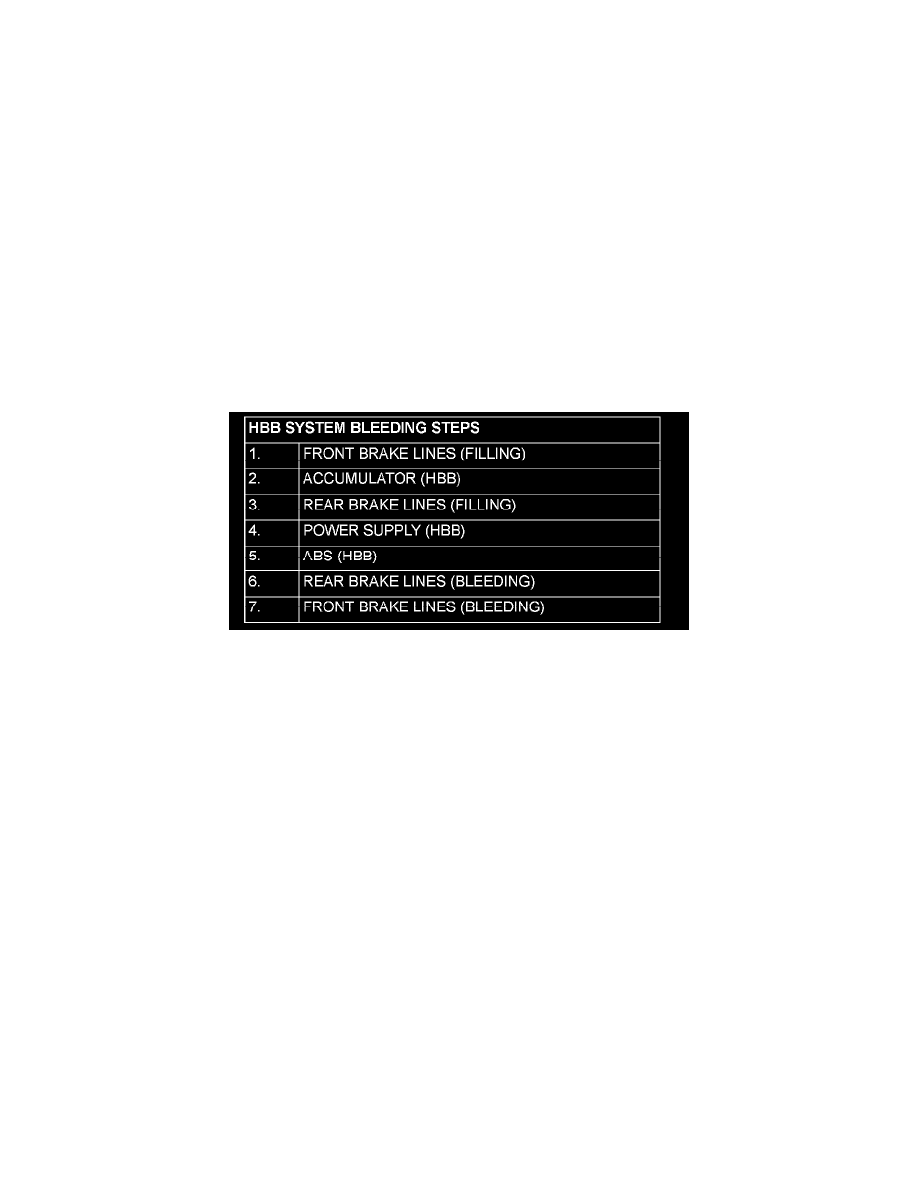Montero V6-3.8L SOHC (2005)

Brake Bleeding: Service and Repair
BRAKE FLUID LEVEL INSPECTION AND BLEEDING
CAUTION:
^
Use only brake fluid DOT 3 or DOT 4. Never mix the specified brake fluid with other brake fluid, as it will significantly decrease braking
performance.
^
Depress the brake pedal slowly. If the brake pedal is pressed too quickly, the pump motor will activate frequently and a large volume of
high-pressure brake fluid may flow from the brake caliper quickly, depleting the HBB reservoir contents and possibly introducing air into the HBB
system.
^
Depending upon the quantity of brake fluid in the reservoir, if the brake pedal is pressed with the reservoir cap removed, the brake fluid in the
reservoir may overflow.
^
Use suitable protection to prevent brake fluid from contacting underhood components and body paint.
HBB System Bleeding
WARNING: The HBB system bleeding must be done in the following cases.
^
If brake fluid is drained after removing or installing the HBB
^
If there is excessive brake fluid loss during normal brake system bleeding
^
If you suspect that air has entered the HBB system
NOTE: The HBB brake system bleeding procedure requires two persons working together.
HBB system bleeding must be done in the following order:
CAUTION:
^
Keep the brake fluid reservoir level just above the "MIN" line. Monitor the fluid level during this procedure to ensure the fluid does not reach
below the "MIN" line, to prevent air from entering the system.
^
If a large quantity of brake fluid is drained during the bleeding procedure, the accumulator pressure will decrease abnormally. Do not bleed more
than 0.1 dm3 (0.11 quart) from each wheel at a time.
^
Confirm that the pump motor stops after each air-bleeding step. If not, proceed to the troubleshooting the HBB System section.
NOTE: The buzzer may sound during this procedure due to low pressure in the system. The buzzer will stop when normal HBB pressure is restored.
Required Special Tools:
^
MB991958: Scan Tool (MUT-III Sub Assembly)
^
MB991824: Vehicle Communication Interface (V.C.I.)
^
MB991827: MUT-III USB Cable
^
MB991911: MUT-III Main Harness B
1. Fill the front brake system with brake fluid as follows (RH first, LH second):
1. Attach a clear hose to the RH caliper bleeder valve. This helps to monitor air/fluid flow.
2. Be sure the fluid level is between the "MIN" and "MAX" lines.
3. Turn the ignition switch to the "LOCK" (OFF) position. Pump the brake pedal 3 - 4 times and hold it depressed.
4. Open the RH caliper bleeder valve 1/4 turn.
5. With the bleeder valve still open, pump the brake pedal repeatedly to fill the line with fluid until no obvious air bubbles are seen. When no
more obvious air bubbles are seen, and while the brake pedal is still being pumped, close the bleeder valve.
6. Repeat steps (1) - (5) for the LH caliper.
7. Release the brake pedal when both sides are filled.
2. Fill the pump motor as follows:
1. Turn the ignition switch to the "ON" position to operate the pump motor.
a. If the pump motor operates normally (normal operation sound), go to step 3.
